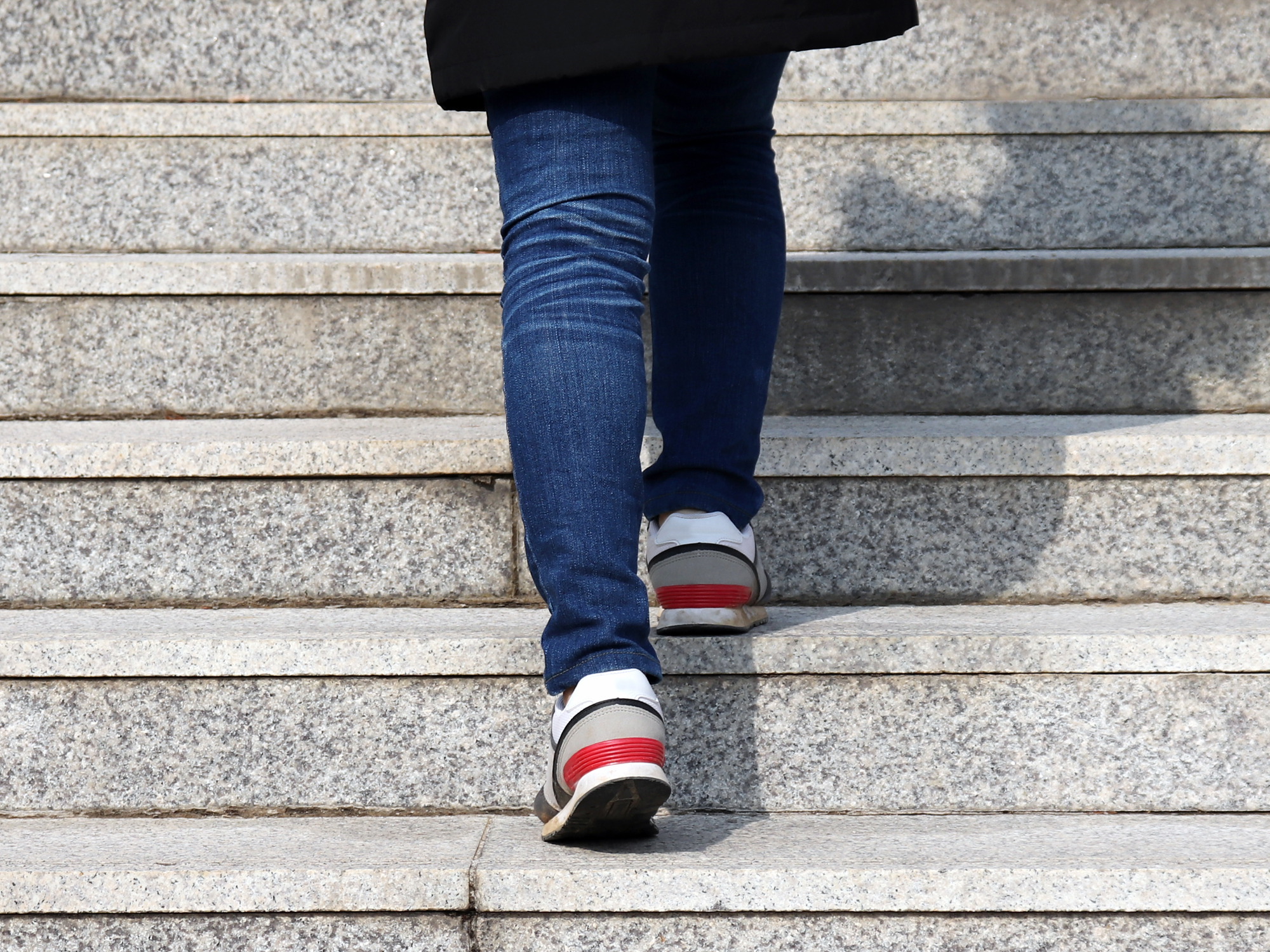Get Easy Health Digest™ in your inbox and don’t miss a thing when you subscribe today. Plus, get the free bonus report, Mother Nature’s Tips, Tricks and Remedies for Cholesterol, Blood Pressure & Blood Sugar as my way of saying welcome to the community!
How to ‘climb’ away from diabetes and heart disease

“I know I should exercise, but I don’t have the time… don’t have a gym membership… it’s cold outside and I can’t walk… don’t have the right equipment…”
Yes, that’s me talking, and maybe you as well. I’ve had every excuse in the world not to exercise… that is, until now.
I’ve discovered something I can do that will NOT allow for excuses.
- It’s already installed in my home, ready and waiting.
- I don’t need any special clothes – I can wear my pajamas if I like!
- I don’t need to go outside in the cold.
- I can even work this exercise routine into my busy daily schedule.
Excuses… blown out of the water.
Most of you have this piece of equipment in your home, too.
Want to know what it is?
The benefits of stair climbing
If you live in a house with stairs, you’ve probably been missing out on a daily opportunity to strengthen your heart and lungs, keep your weight down, and stretch your muscles.
Studies have shown how this deceptively simple form of aerobic exercise benefits all aspects of our health.
- Blood pressure and healthy arteries – In a study earlier this year involving 41 postmenopausal women with high blood pressure, half did no exercise, while the other half climbed 192 steps, two to five times per day, four days per week.The group that exercised showed significant reductions in blood pressure, as well as more flexibility of the arteries.
Read: The best exercise to lower your blood pressure
- Diabetes – A recent Japanese study examined people age 65 and up who had type 2 diabetes. Researchers had their subjects do just three minutes of stair climbing thirty minutes after eating a test meal, then again at the one hour mark.Compared to when they rested for three hours after eating, their blood sugar levels were significantly reduced.
- Brain health. In an observational study in 2016, researchers found a correlation between higher daily amounts of stair climbing and decreased “brain age.”
Is there a right way to climb stairs?
In short… yes, there is!
If you climb stairs regularly between your laundry room and bedroom, or to get up to your third-floor apartment, congratulations! You are already building muscle and becoming more fit.
But stair climbing that’s done with the proper technique, and with some important health considerations in mind, can have those far-reaching benefits we described above.
Here are some tips on stair climbing technique.
Handrail use. Since gravity is working against you, it’s best to hold the handrail, both for balance and to help propel you up the stairs.
Some people like to use two hands to help pull themselves up the stairs. This will help build upper body strength. But at the least, it’s best to keep one hand over the rail in case you lose your balance.
If you have an excellent sense of balance, you can swing or pump your arms to help propel you and get an upper body workout. Just be sure your balance is truly steady enough for this.
Are two steps at a time better? Taking two steps at a time will work your buttocks and quadriceps muscles, and will burn more calories per minute. But beware the longer stride if you have knee problems, poor balance, or short legs (the latter could lead to a groin injury).
If you like, vary your workout by switching to double-step climbing once in a while.
Can’t I just use a Stairmaster machine? If you do own a stair climbing exerciser, that’s fine. But there are some definite differences between using it and climbing real stairs.
Using a stair climbing machine will generally put less stress on your hips, ankles, and knees. If you have arthritis, this is something you’ll want to keep in mind.
On the other hand, climbing real stairs puts those same joints through a fuller range of motion, lubricating and stretching them. Additionally, climbing a staircase involves impact, which is good for the bones.
Before starting any new and vigorous exercise regimen, it’s probably best to talk with your doctor about your particular needs and restrictions. In this way, you’ll get the most benefit from stair climbing without doing any harm.
Editor’s note: Are you feeling unusually tired? You may think this is normal aging, but the problem could be your master hormone. When it’s not working, your risk of age-related diseases skyrockets. To reset what many call “the trigger for all disease” and live better, longer, click here to discover The Insulin Factor: How to Repair Your Body’s Master Controller and Conquer Chronic Disease!
Sources:
- Stair Climbing: How to Get the Most Benefits — Berkeley Wellness
- Efficient Stair Climbing Techique — teamstairclimb.com
- The effects of stair climbing on arterial stiffness, blood pressure, and leg strength in postmenopausal women with stage 2 hypertension — Menopause
- Stair climbing/descending exercise for a short time decreases blood glucose levels after a meal in people with type 2 diabetes — BMJ Open Diabetes Research & Care
- Differences between Chronological and Brain Age Are Related to Education and Self-Reported Physical Activity — Academic Commons
- The Evidence of Stair Challenges — StepJockey













